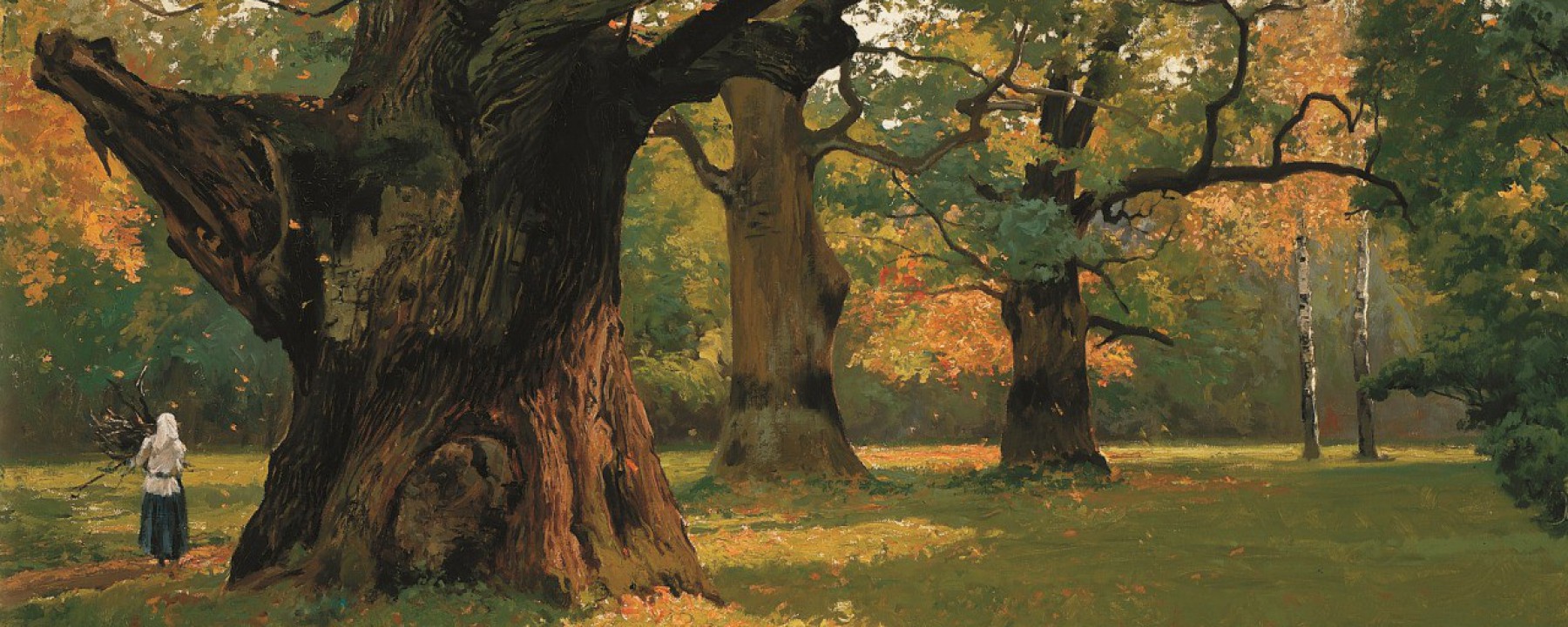
People in the old Polish countryside were very particular about maintaining certain rites and preparing protective accessories in their household and the whole farm enclosure. These customs stemmed from pre-Christian Slavic protective rituals, and – despite the centuries of influence of the Christian church – they survived in continuity for as long as the early 20th century in many parts of the rural Poland.
The following informations I’ve translated for you are describing the old protective customs from the historical region of Mazowsze (Eng: Mazovia) located in the north-east parts of the central Poland. The same or very similar customs are common in other regions of Poland, as well as in many other Slavic countries.
Mazovian people were using the power of the herbs to ward off all the devil forces lurking from the shadows of the nature. A common custom was to decorate the gates leading to the properties and the entrances to the cottages with aromatic ‘bouquets’ made of the wormwood herb (Pol: bylica). They were meant to protect from jaundice and from the envious eyes, to neutralize the evil charms, and to treat diseases (especially fevers) caused by any kinds of unclean forces or sorcery.

When there was the need, people added healthy branches of wild black eldberry (Pol: czarny bez) into the wormwood bouquets. According to the oral traditions, the black eldberry branches were meant to countervail the influence of the evil specters and demons.
A popular method of protection was to hang bundles of nettle above the entrance to the house. It was warding off the demons. Nettle bundles were also placed in strategic places of the crop fields as a protection agains charms that might cause a scanty harvest.

Mazovians believed that the strongest presence of the evil forces in the nature was on the Eve of St. John – the night of summer solstice called in Polish e.g. sobótki or kupalnocka. There were many protective measures to prevent the influence of the evil during that night. People were carefully preparing a composition of certain herbs and tree branches and tucking them into the thatched roofs (strzecha). The most popular materials used for that protective barrier was the wormwood, burdock, maple and alder (bylica, łopian, klon, olszyna). Placed along the edge of the roof covering, they were protecting the whole household from the black magic.

The protective rituals on the night of the summer solstice included also the preparation of wreaths which I described more in detail in this article. Unmarried girls were carefully selecting the herbs and flowers for their wreath. Its shape and color was meant to symbolize the warming power of the Sun, among many other meanings. In Mazovia the most common elements for the wreath was the all-yellow crown daisy (złocień), dandelion (mniszek lekarski), arnica (arnika), marigold (nagietek), St. John’s wort (dziurawiec), buttercup (jaskier), globeflower (pełnik), and also camomile (rumianek). After midnight the girls performed a ritual in which the water and the fire were meant to connect. The herbal wreaths were decorated with a candle, and they swam down the rivers with the burning flame.
The same ‘golden’ flowers were kept inside houses in small bouquets, often put on the windowsills for protection against the darkness.

This article is my loose translation of informations published by the Museum of the Mazovian Countryside in Sierpc (link), along with a few additional informations. For the Polish readers, here are a few good articles related to the topic of herbs in folklore available online:
- Wierzenia i zabiegi magiczne zabezpieczające zagrodę w: “Etnografia Polska” t. XXVI, z. 1 [PDF]
- Zioła w tradycji ludowej Podlasia (Muzeum Ciechanowiec)
- Historie ziołowe: pokrzywa (Muzeum Radom)
- Sobótki (Muzeum Radom)
- Święto Matki Boskiej Zielnej (wzmianki o ochronnych bukietach, Muzeum Radom)
- Rola roślin w zwyczajach funeralnych wsi polskiej (Muzeum Radom)
- Kwiat paproci, czyli rzecz o roślinach w ludowych tradycjach, legendach i wierzeniach
- Adam Fischer “Lud polski”: § 30. Zwyczaje domowe, § 31. Zwyczaje doroczne [wikisource]
- Etnografia Lubelszczyzny – ludowe wierzenia o domu

Hi Lamus,
Thank you for so much amazing information! I wondered if there was something traditionally said when doing this? Not sure if there is something pre-christian that sort of sealed the protection. Thanks again!
Sincerely,
Soolah
LikeLike
Dear Lamus, As a teenager I have traveled to Mazovia, and Carpathian mountains where I have experienced the customs, and lived in houses that have been blessed by herbs. There is a special tranquility, and peace to the house that have been cloaked and blessed by herbs. This year I have planted many of the herbs around http://www.WolfLodgeCalifornia.com, located in beautiful Lake County inside of a crater of Mt.Konocti. I have also re-blogged your wonderful article on http://www.konoctishaman.org. Thank you, Galina Arlov, Konocti Shaman
LikeLiked by 1 person
I so agree with what you wrote about the special tranquility. The herbal blessings are coming from the core of shamanism, and can evoke a harmonious feeling of going back to the roots. We live in such unique times: so many herbs are available around us to gather or import, we should cherish that a lot! Many blessings!
LikeLike
Reblogged this on Elder Mountain Dreaming @ gmail.
LikeLike
It didn’t work when i reblogged, so i just copied and pasted and put your information at the top. great article hope its ok that i share, you can see it on my page
LikeLike
Sorry for a late response – it’s good with me with the proper credit. Thank you so much for taking the time to leave the message here for me! With much love
LikeLiked by 1 person